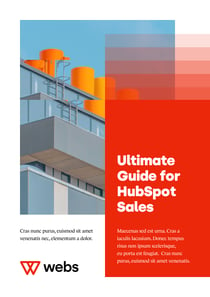HubSpot has put huge effort into developing its Content Management System, and it is now a worthy contender to WordPress. This article explores how WordPress and HubSpot stack up against each other and the features to consider if you are a sales-driven organization and want to ramp up your ROI.
The Organic Origins of WordPress
WordPress is the most popular Content Management System in the world and has been for some time. It was originally developed for blogging and it hasn’t changed much over the years. And because it has been around for so long, you will be hard pressed to find a web developer that hasn’t worked in WordPress before.
WordPress:
- Is an open-source platform, requiring installation and hosting.
- Needs plugins and licenses to extend functionality.
- Is not intuitive to use.
- Provides a blank slate for developers to write custom code.
Competitors to WordPress are numerous and they have mainly focused on improving drag-and-drop design features to make website design less technical, but most lack functionality and integrations.
HubSpot's Engineered Design
HubSpot has a native CMS, built to complement, and integrate with, the entire HubSpot Marketing, Sales and Service suite, and has fast become a serious contender to WordPress. Because it is seamlessly integrated into the HubSpot platform, it allows you to connect the dots of your content strategy and customer journey, from blog to landing page to call-to-action to email, all within an intuitive user interface.
HubSpot is:
- SaaS, hosted in the cloud, full 24/7 support.
- Designed from the ground up to fully integrate with HubSpot CRM.
- Easy to use extension of HubSpot Marketing UI.
Weigh Up the (hidden) Costs
WordPress sites are costly to maintain. Plugins are required, they must be purchased, tested, and maintained. A skilled development team is needed to manage the website, hosting, install updates and update content.
WordPress requires specific plugins for just about everything, from creating forms, to sitemaps, to SEO, to A/B testing. Each plugin must be purchased and renewed, which can mean for some unpredicted costs. With HubSpot, these features are native, and the cost is included in your HubSpot license.
The benefits of HubSpot (SaaS) compared to a WordPress installation are:
- Less maintenance, no surprise downtime.
- No hosting agreements to negotiate.
- Less reliance on developers to maintain integrations.
- No technical updates and patches to install.
- Transparent, predictable costs.
SaaS is Sexy
There is a myth that HubSpot CMS has design limitations, lacks permission settings and security features, and that its web pages are slow to load. Perhaps those perspectives had a grain of truth a few years ago. But certainly not anymore.
HubSpot has a:
- Top-notch team dedicated to security, reliability and speed.
- Global Content Delivery Network for fast page load time, regardless of user location.
- Superb documentation and technical support.
- Detailed permission settings and content partitioning.
- Easy to use multi-language content features.
- Free SEO tools that integrate with Marketing Platform.
Let Marketing Take the Wheel
The easy-to-use interface means your Marketing team will be quick to learn how to create, test and deploy web pages. Marketing no longer needs to interface with Project Management and IT to schedule, brief, develop and test new web content. Instead, Marketing can free up time to work closely with Sales to uncover insights and create and iterate valuable content at speed.
With HubSpot you can:
- Quickly design and deploy web pages using an intuitive UI.
- Keep control of your branding and design with templates and CSS styling.
- Put customer experience at the heart of your website, creating tailored content optimized for each touchpoint and context.
- Give your Sales Team 20/20 visibility into each lead’s website activity, and insights into what content drives conversion.
- Leverage 800+ pre-built integrations, e.g. WooCommerce, Xero, SurveyMonkey and VidYard.
Assemble your Pit Crew!
It is a paradigm shift: seeing your website as a flexible, dynamic platform for engaging your customer in conversation, led by your Sales and Marketing team, tailored for driving sales. As opposed to a rigid, branded, digital “shop front”, governed by IT and Web Design. It is a shift that takes a bit of getting used to.
Changes in operational structure may be required. Sales and Marketing will need to view themselves as two sides of the same coin and work very closely together. IT and Design will need to facilitate rather than dictate. And you may find you need more Copywriting resources. Most importantly, your organization will need to put the customer at the center of every decision – which is exactly where they should be.




